The Levels of Understanding Posters can completely change how students reflect on their learning.
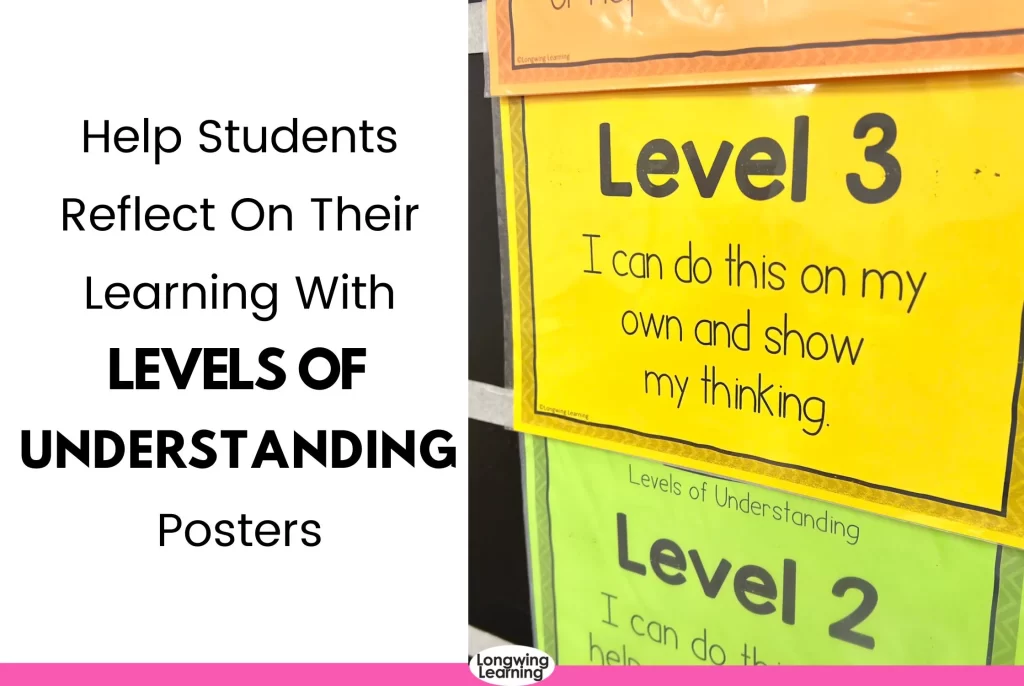
Have you ever asked your students, “How well do you understand today’s lesson?” only to hear, “I don’t know”? Sound familiar?
Many students struggle to assess and express their understanding because they haven’t been taught to self-reflect.
They often wait until a test to realize they still need to grasp the material fully.
While there are plenty of tools to monitor students during a lesson, teaching students to express their understanding or ask for help makes a real difference in the classroom.
That is why I started using Levels of Understanding Posters in my classroom.
Based on Marzano’s framework, these simple tools gave my students the language to reflect on their progress and gave me valuable insight to plan lessons effectively.
In this post, I am sharing all about the Levels of Understanding Posters and how I have used them in my classroom. I will also give you tips for setting them up—whether you have a small or large classroom.
Table of Contents
What Are The Levels of Understanding Posters?
The Levels of Understanding Posters are designed to help students rate their learning using a self-assessment rubric.
They are based on the Marzano Levels of Understanding, written in student-friendly statements to help students rate how well they understand a concept.
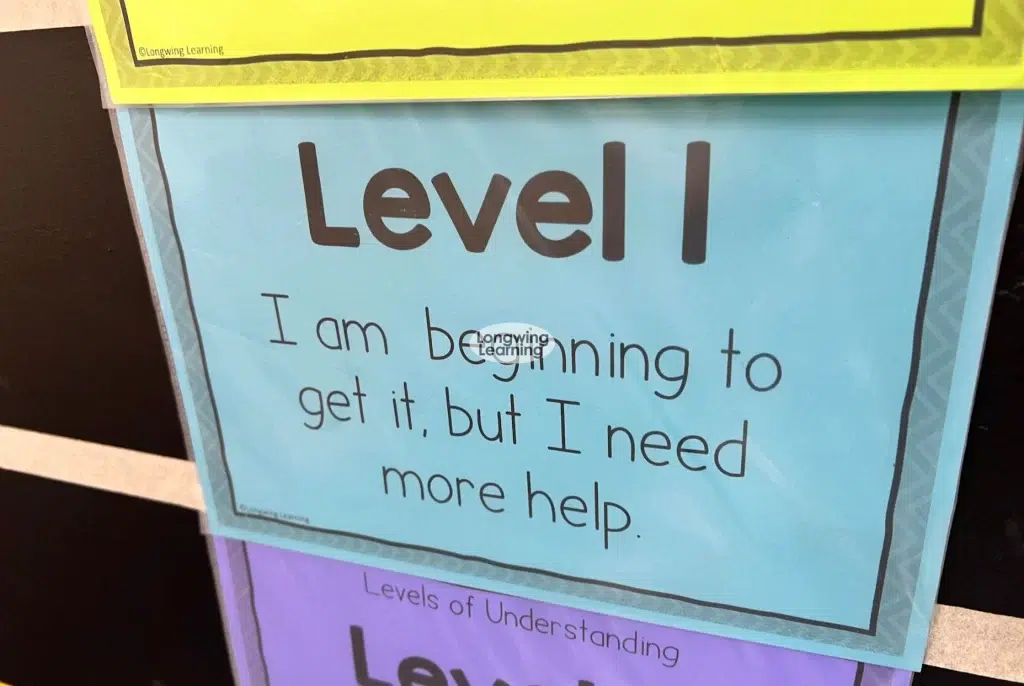
These posters come in handy as exit tickets during any formative assessment done in the classroom because they allow the teachers to see the levels of confidence students have with the concept they are teaching.
As a teacher, it has helped me quickly check which students might need extra help and adjust the lesson to meet their needs.
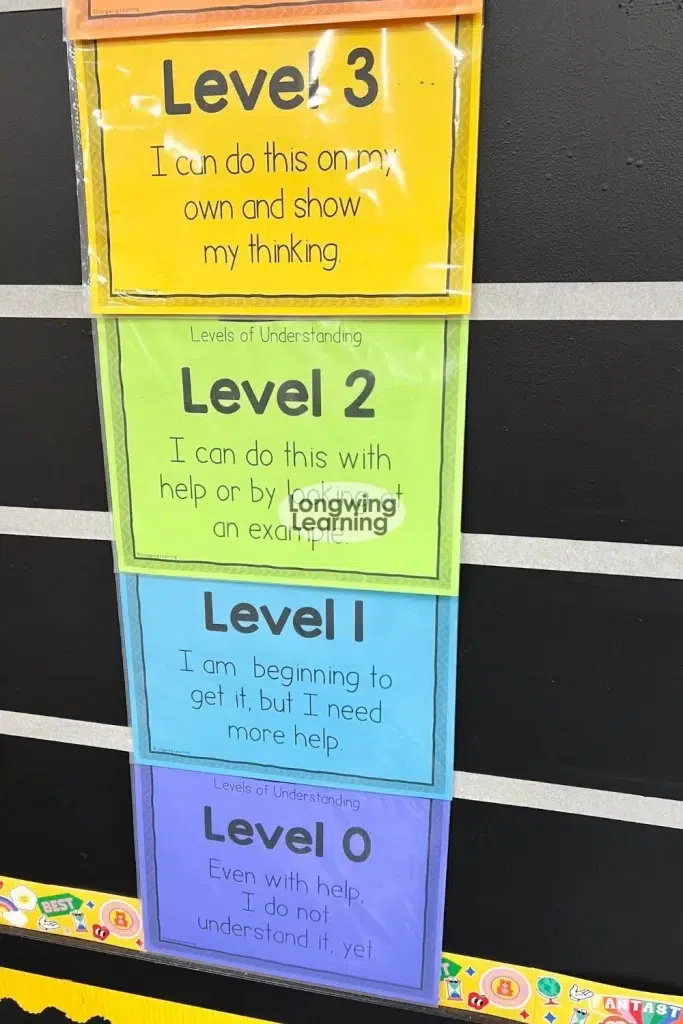
Here’s a quick breakdown of the levels:
- Level 4: “I can teach it!” Students demonstrate mastery by confidently explaining the concept to others.
- Level 3: “I understand it!” They can apply the concept independently and successfully.
- Level 2: “I’m starting to get it!” Students understand parts of the concept but still need support.
- Level 1: “I need help!” They are confused and require guidance to grasp the lesson.
- Level 0: “I don’t understand this yet!” The concept is entirely new, and they need foundational instruction.
These posters help students clearly see and understand their learning progress.
Instead of guessing how well they understand a lesson, students use any of the statements to rate their confidence level.
This process helps them think about what they know and what they still need to work on.
How I Use Levels of Understanding Posters in My Classroom
In my classroom, the Levels of Understanding Posters are a part of our classroom routine to help my students reflect on what they know and track how much they learn throughout a unit.
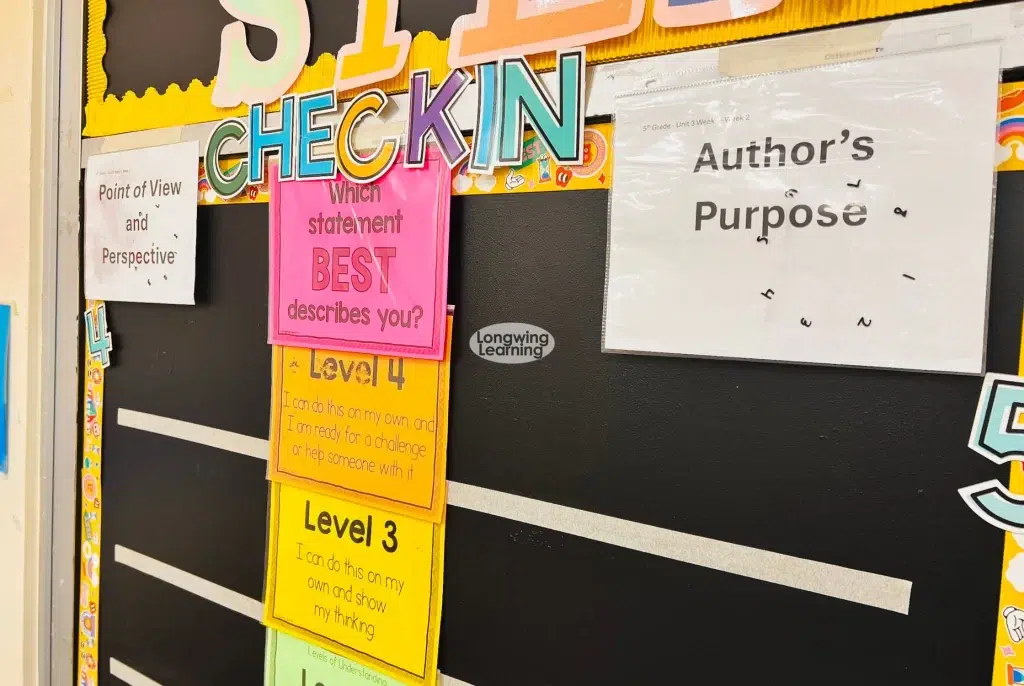
I use them at different points —before, during, and after a unit—to encourage students to think about their progress and build their confidence.
I give students sticky notes where they only write their name, and they place it next to the statement that best matches their confidence level with that particular concept.
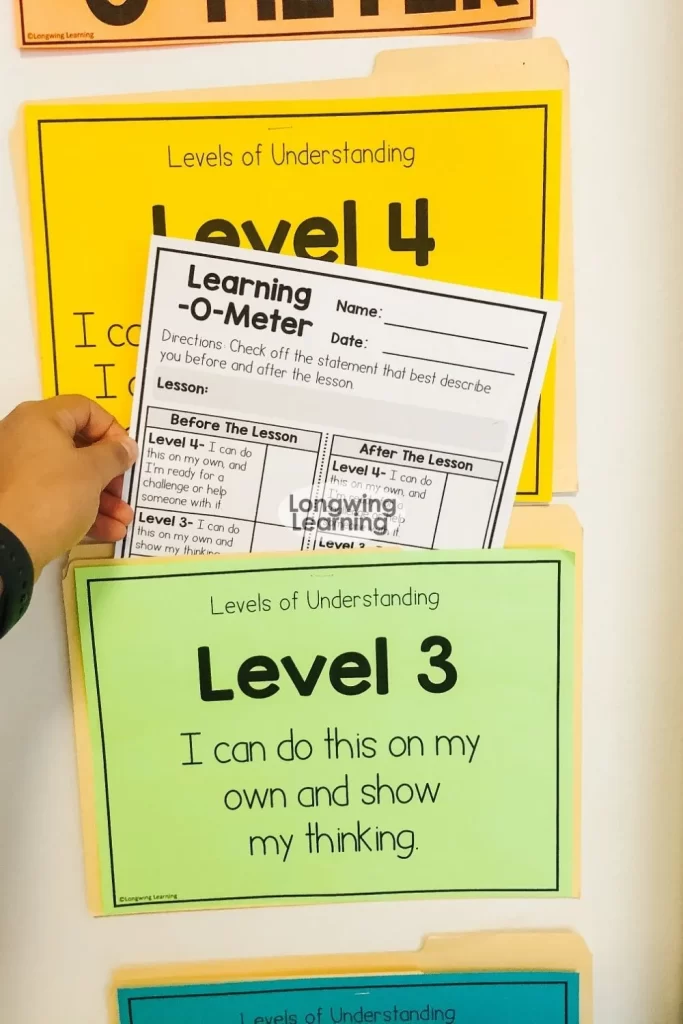
Here is a breakdown of how I do it:
- Before the Unit: Students place their sticky notes based on their prior knowledge.
- During the Unit: We revisit the posters periodically, encouraging students to move the same sticky notes as they understand more.
- After the Unit: Students reflect on their progress by placing their sticky notes on the level that best represents their confidence at the end.
Setting Up the Levels of Understanding Posters
Throughout the years, I have set up the posters in different ways, depending on how much wall space I have in the classroom.
Regardless of the wall space, I print the posters in black and white on brightly colored paper to make them stand out.
Instead of laminating, I slide them into sheet protectors to keep them durable and easy to update when needed.
Then, I tape them vertically on a bulletin board, with the standard we’re focusing on displayed at the top.
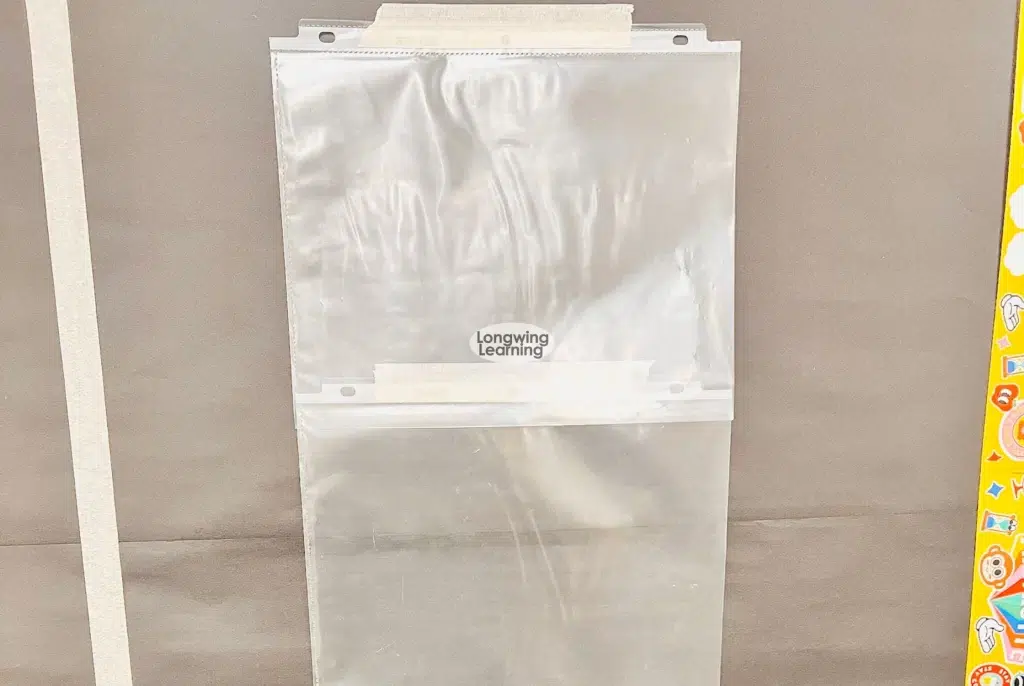
Because I teach two grade levels, I divide the bulletin board into two sections using painter’s tape and label each side for each grade.
This saves space, and it keeps it organized for both groups.
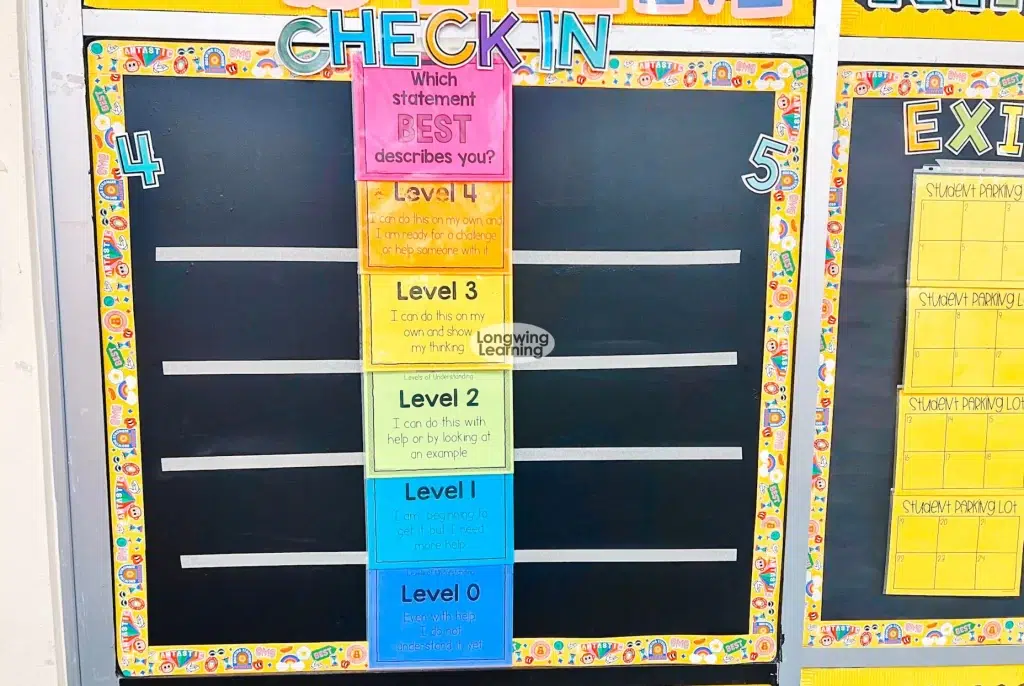
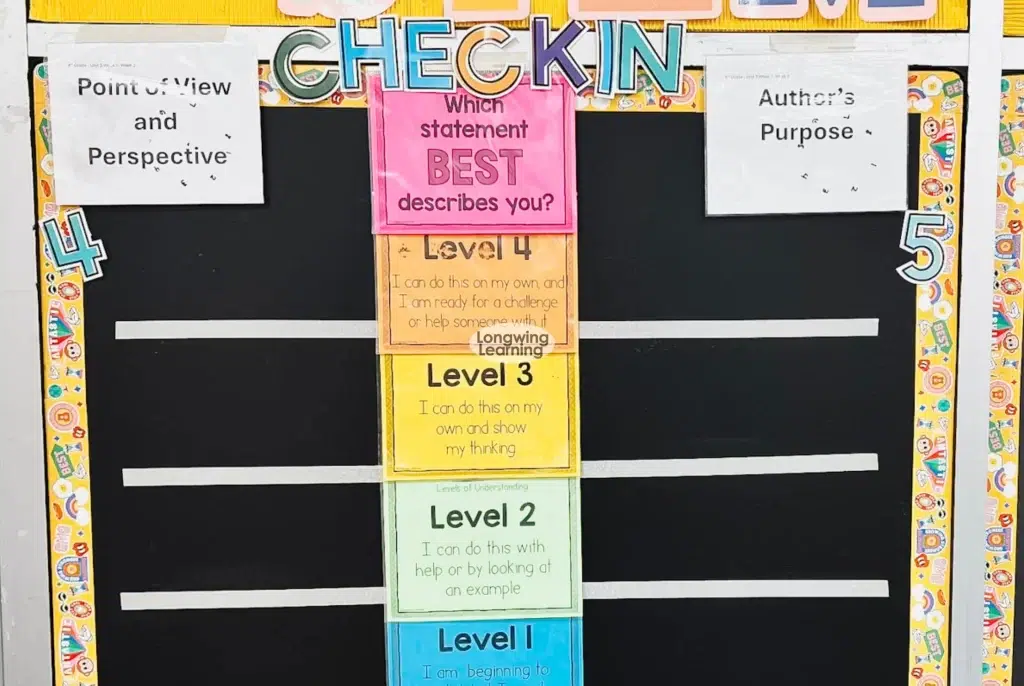
Alternative Setups for Limited Wall Space
Not every classroom has the luxury of a large bulletin board, and I have often been in that situation.
As my classroom layout changes, I’ve had to get creative with displaying the Levels of Understanding posters.
Here are three alternative setups that work well, depending on your available space and your teaching style.
The Learning-O-Meter: Perfect if You Have Wall Space
This version is a fun and interactive way to engage students while tracking their understanding.
I tape each poster onto a manila folder, staple the sides to create an opening at the top, and arrange the folders vertically on a wall.
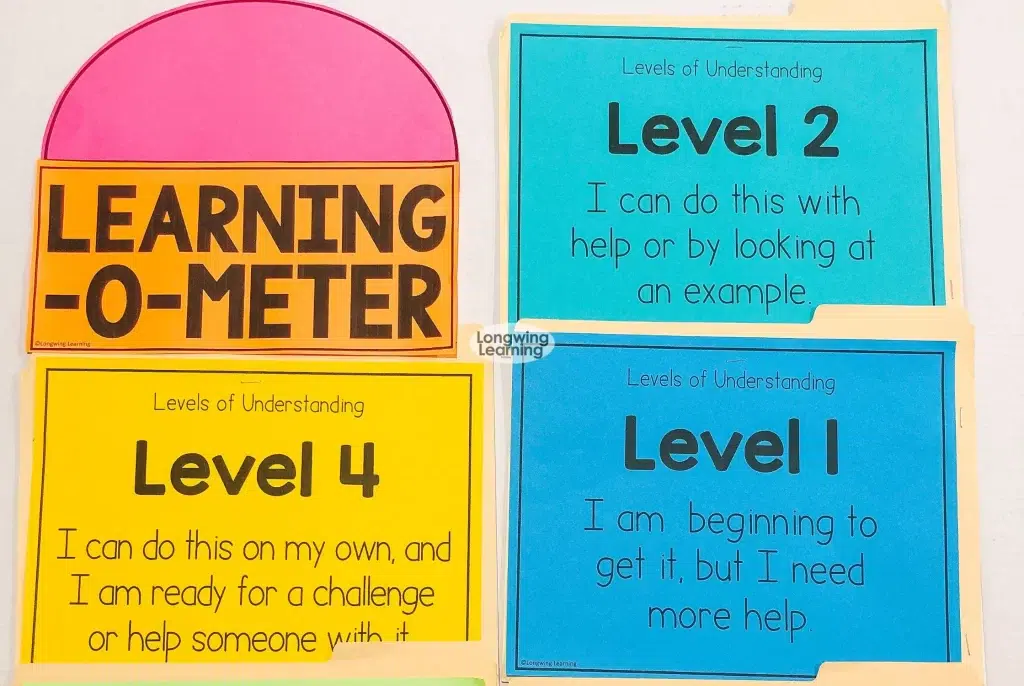
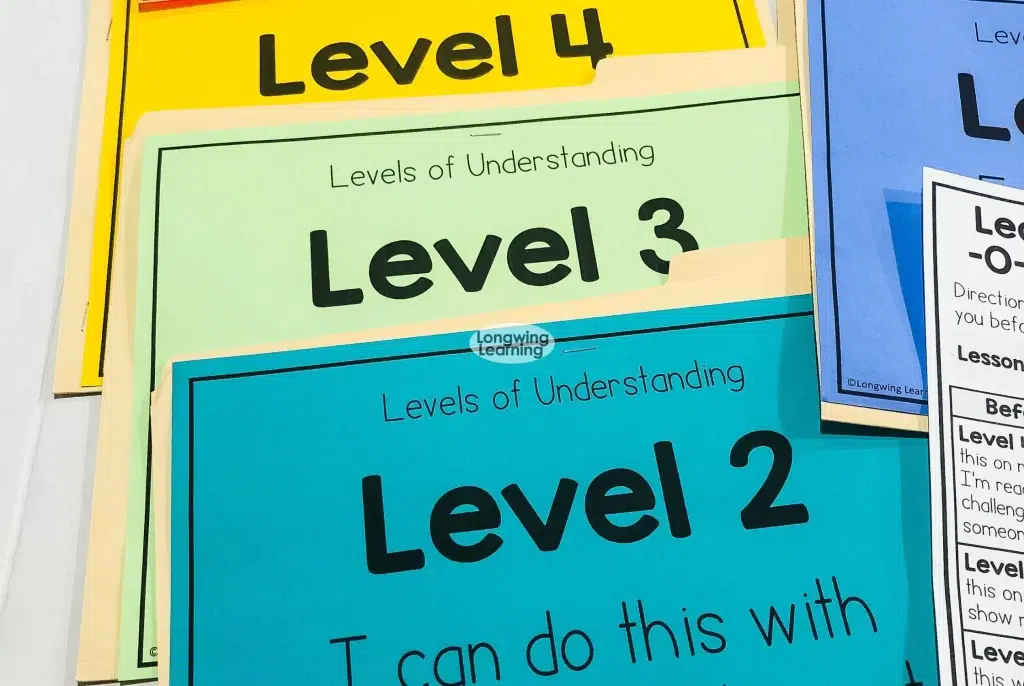
At the top, I add a “Learning-O-Meter” sign to give it the look of a carnival strength meter.
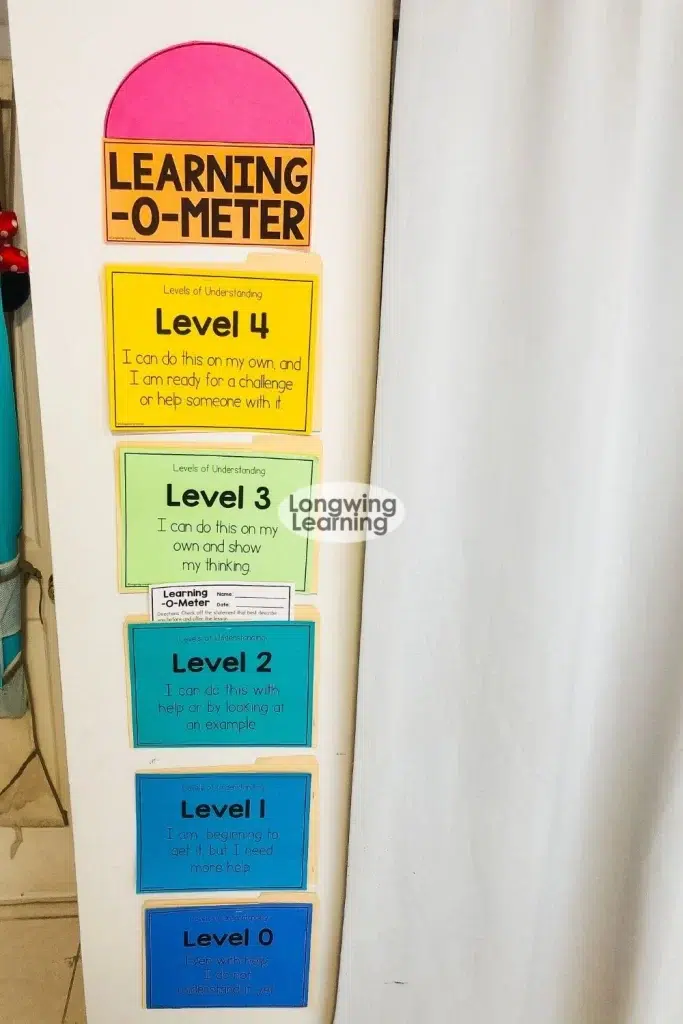
Students fill out exit tickets to show their understanding and drop them into the folder that matches their level.
My students get excited to drop their tickets into the folders. They love seeing the folders fill up with the exit tickets.
Desk-Friendly Mini Posters: Ideal if You Have No Wall Space
If wall space is tight, you can still make the posters accessible by printing them six to a page.
Each student gets their own set, which can be taped to their desk.
Pair the posters with an exit ticket template so students can rate their understanding before and after a lesson.
This setup is incredibly convenient because it keeps the process streamlined and allows students to reflect without leaving their seats.
It’s perfect for small classrooms where every inch of space matters.
I found this setup especially useful when I taught in a small classroom.
Students liked having the posters at their desks, making the self-assessment process quick and easy.
Reference-Only Posters: Perfect for Limiting Movement
If you prefer to minimize classroom movement while still using the posters, set them up in a small, designated area.
Use them as a visual reminder rather than an interactive tool.
Students can show their level of understanding by holding up a number on their fingers or by using the posters as a reference while filling out an exit ticket template at their desks.
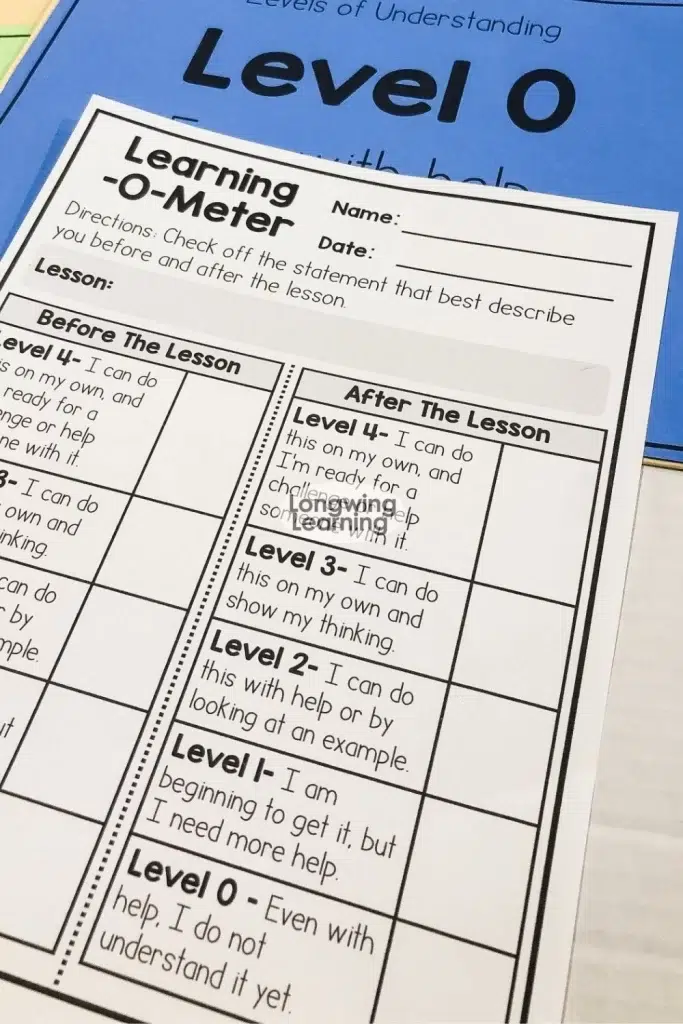
This option works well when you want to save time during transitions.
It encourages students to reflect on their understanding but keeps the process more low-key.
This approach worked well when I had a particularly energetic group of students and wanted to avoid them getting distracted.
It’s a quick, no-fuss way to keep the posters in use while maintaining focus in the classroom.
With these flexible setups, the Levels of Understanding posters can fit into any classroom, no matter the space or teaching style.
Each option provides a meaningful way for students to reflect and grow in their learning.
How Students Use the Levels of Understanding Posters
The real power of these posters comes from how students use them.
This is not something they will figure out on their own—they need to be explicitly shown what each level means and how to use the posters to reflect on their learning.

At first, it might take a little guidance, but with regular practice, students will get into the habit of self-assessing and identifying where they are.
Here are three different uses for the Level of Understanding Posters:
Self-Reflection
The posters make it easy for students to reflect on their learning. Each level has a simple statement that helps them figure out how confident they feel about a skill or concept.
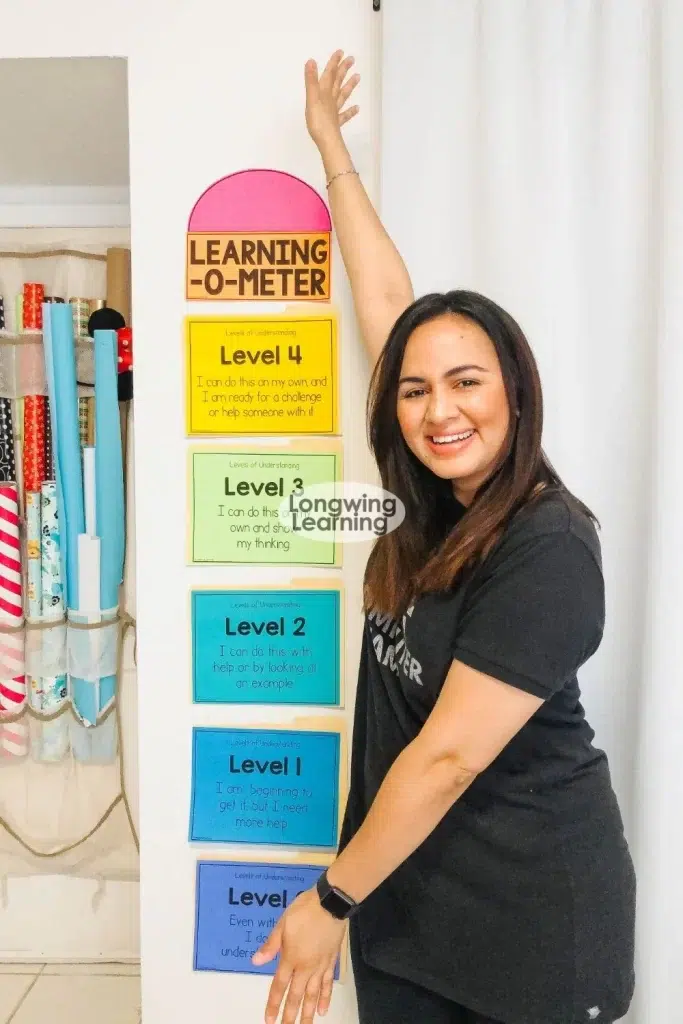
For example, students might ask themselves, “Do I understand enough to do this on my own, or do I still need help?”
This step encourages students to take responsibility for their learning. It’s not about being “right” or “wrong”—it’s about noticing where they are and thinking about how to move forward.
In my classroom, at the start of a lesson, I ask students to place a sticky note with their name on the level that matches how well they think they understand the topic.
This quick activity gives them a chance to pause and reflect before diving into the lesson.
Exit Tickets
At the end of a lesson, students use the posters again to show how their understanding has changed.
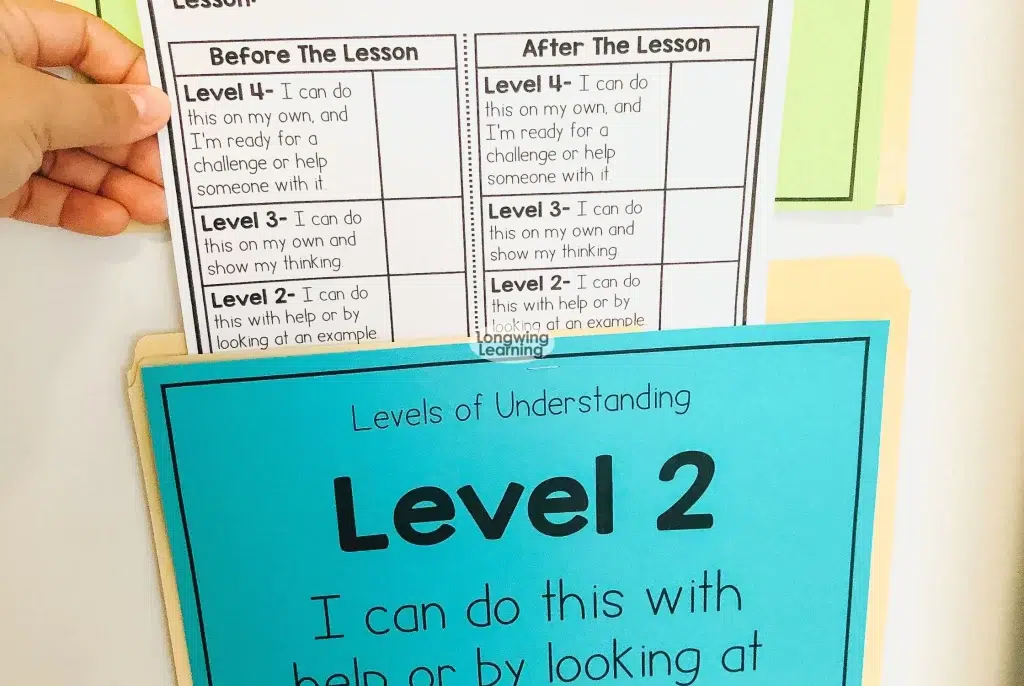
They can move their sticky notes to a new level or fill out an exit ticket to explain how they feel about the lesson.
After a reading lesson, I might say, “Grab your sticky note and move it to the level that matches where you are now. Leave it where it is if you’re still unsure, and I’ll check in with you.”
If we use the exit ticket template, they check off their level and write one thing they learned or are still wondering about.
For me, this is a quick way to see who’s feeling confident and who needs extra support.
For students, it’s a chance to think about what they learned and feel proud when they move up a level.
Class Discussions
The posters are also great for starting conversations about progress.
When students move their sticky notes to higher levels, it’s a visible reminder of how far they’ve come.
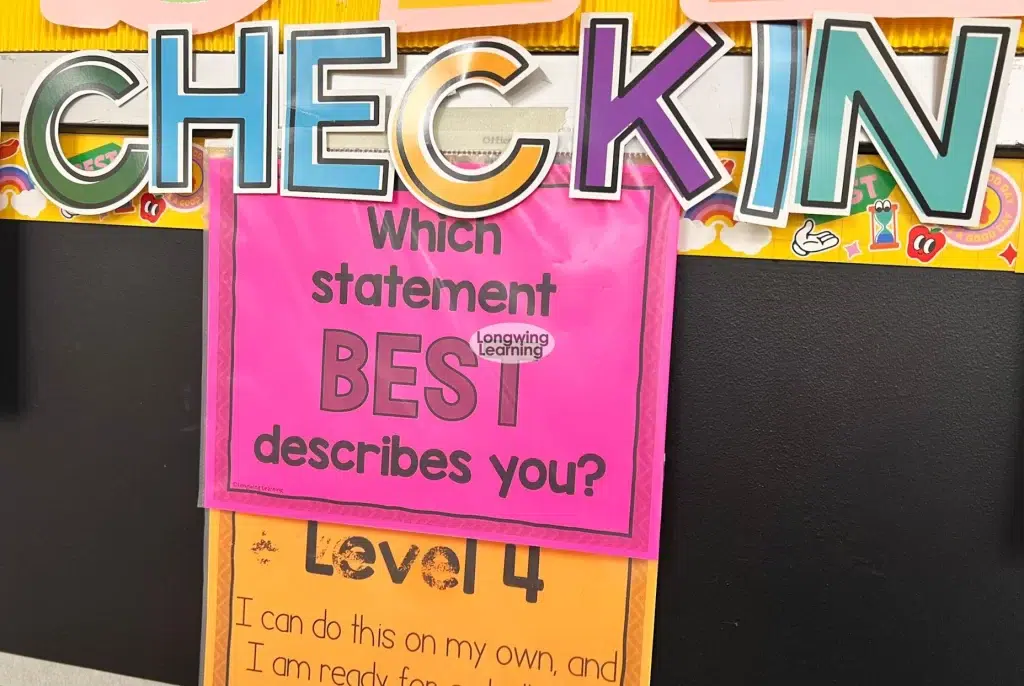
I love celebrating these moments with the class.
In the classroom, I might say, “Wow, look at how many of you moved from Level 2 to Level 3 today! Who can share what helped them feel more confident?”
Students love sharing their progress, and it helps them see that everyone
learns at their own pace.
These discussions matter because they help students understand that it’s okay to be at different levels as long as they work to improve.
It also shows them that learning is a process and progress is something to be proud of.
A Simple Way to Boost Student Reflection
The Levels of Understanding Posters are more than just classroom decorations—they’re powerful tools for helping students reflect on their learning.
Whether you use them as a bulletin board display, a desk reference, or part of a self-assessment rubric, these posters will encourage your students to think critically about their progress.
Ready to bring these into your classroom? Check out my Levels of Understanding Posters in my TPT store and get started today!
They’re easy to set up, adaptable for any classroom, and a great way to foster reflection and growth in your students.







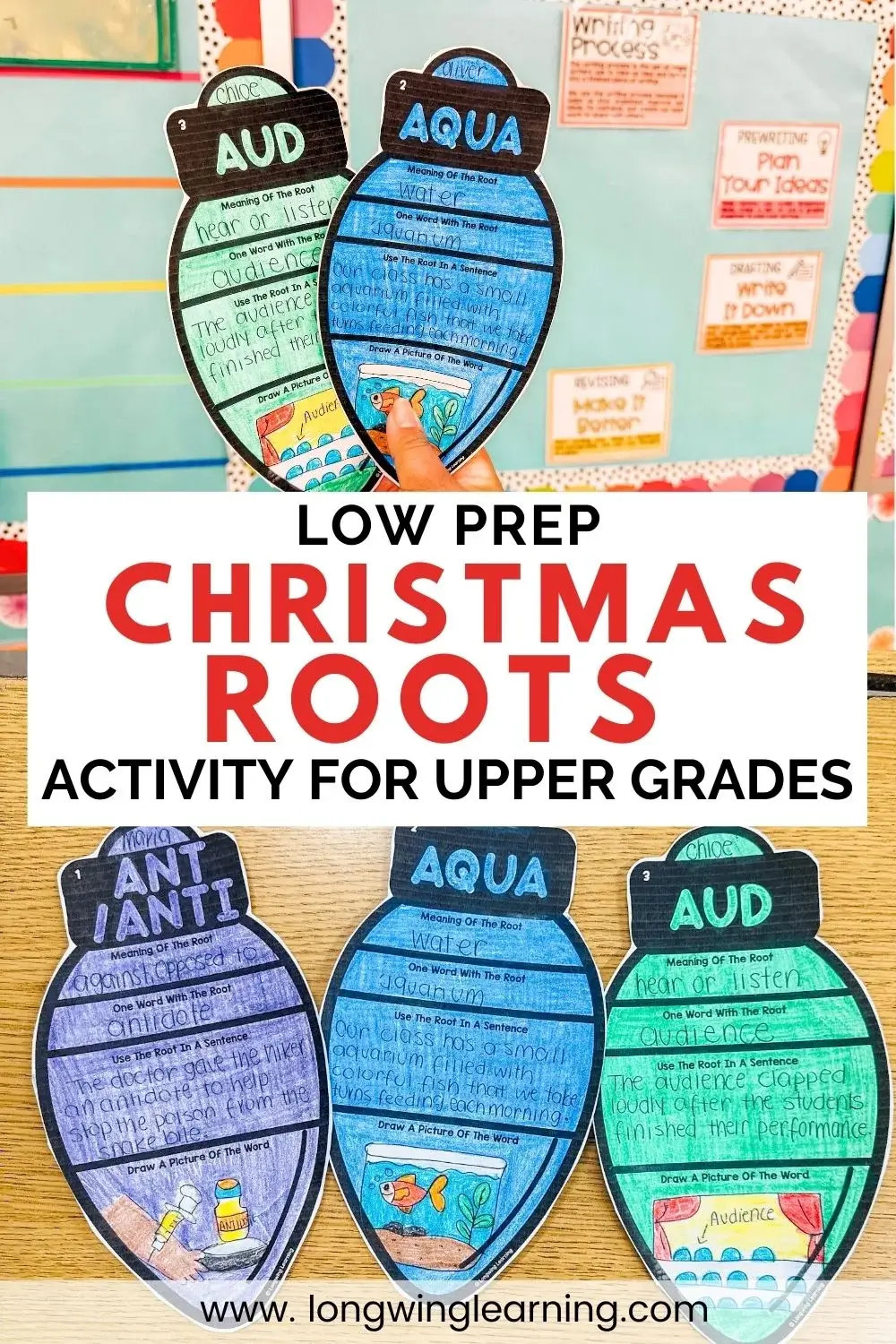
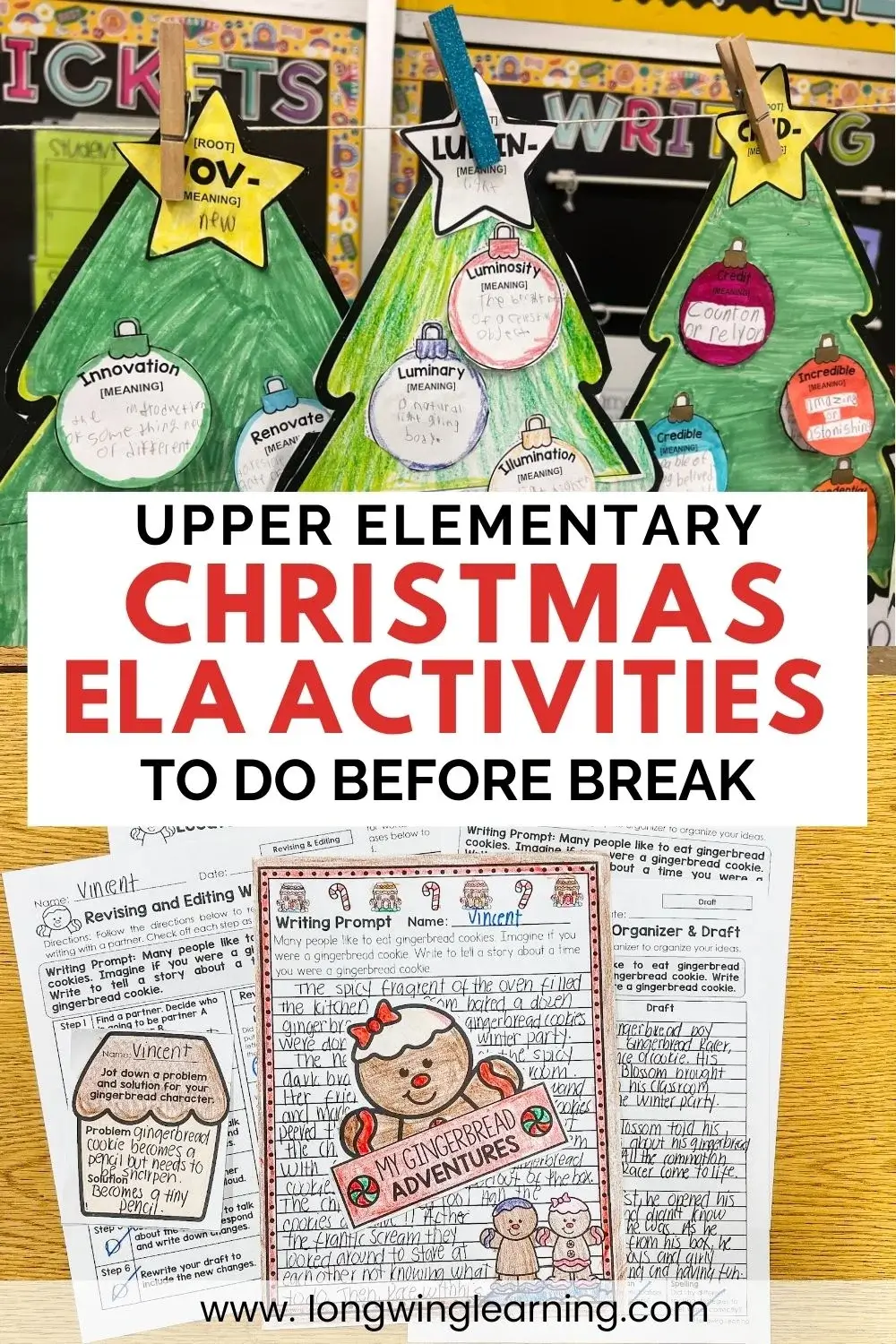
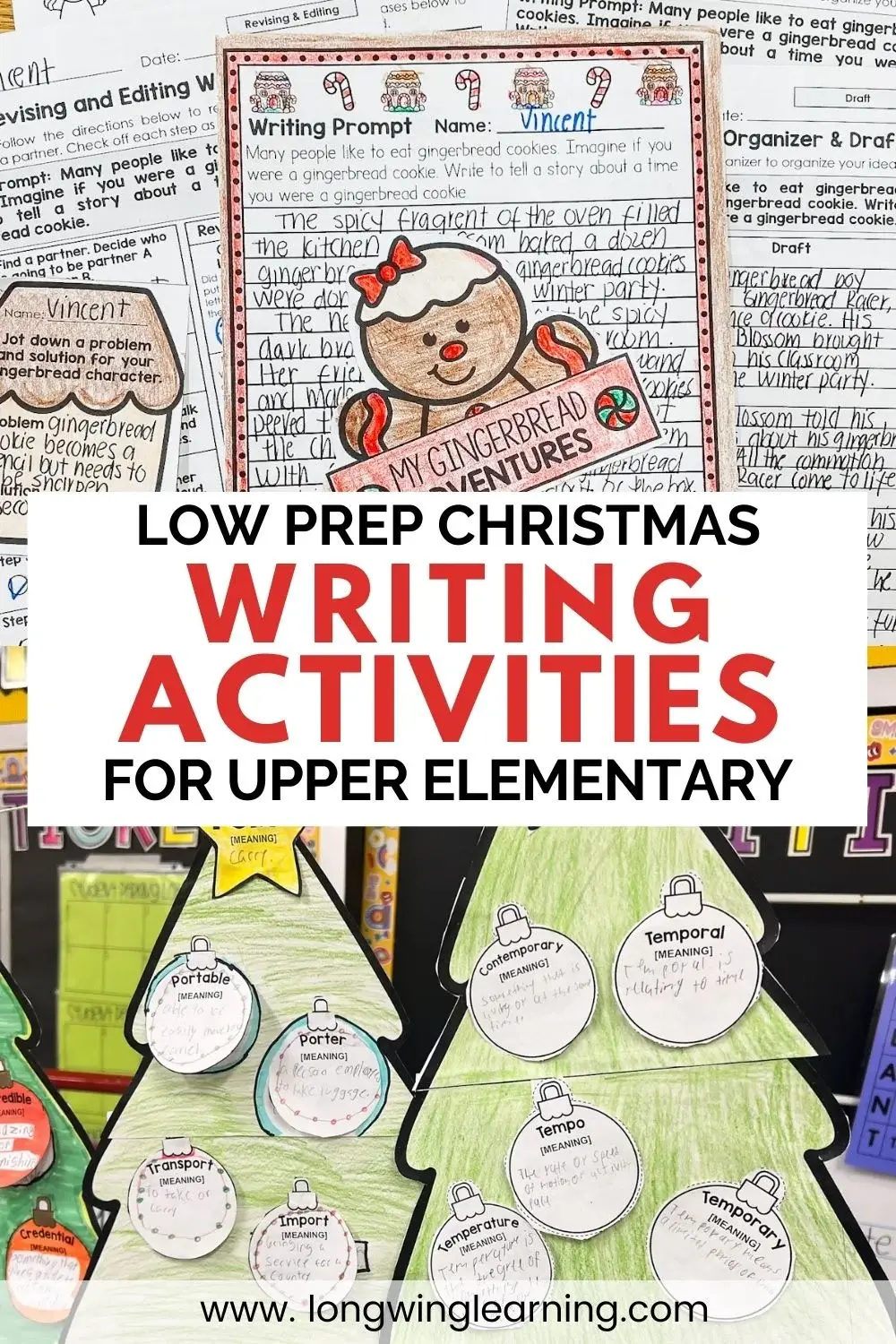

2 Responses
i love it!
Thanks!